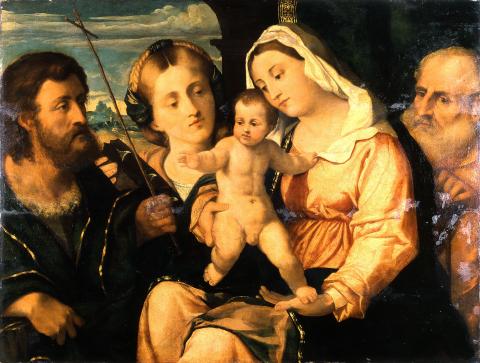The procedure
In a letter dated 28 March 2007, the applicants requested restitution of the above-mentioned objects from the Netherlands Art Property Collection, which were said to be the property of the public limited liability company I. Rosenbaum NV in Amsterdam (hereafter referred to as: ‘Rosenbaum’ or ‘art dealership Rosenbaum’). In a letter dated 30 March 2007, the applicants advised that the application for restitution was, in part, being made on behalf of S. Ltd., an art dealership in New York, as ‘successor company’ to art dealership Rosenbaum, which was liquidated in 1947. They clarified their application in further letters to the Committee dated 14 November 2008, 30 March 2009 and 20 September 2010.
The original application for restitution concerned more works. In his letter dated 21 May 2007, the Minister excluded three paintings that were part of the request for advice sent to the Committee because they were previously returned as part of the Goudstikker case (RC 1.15) and were, therefore, no longer part of the National Art Property Collection. In a letter dated 10 December 2009, the applicants withdrew their application concerning those paintings (NK 3260, NK 3270 and NK 3271) and painting NK 3122.
In a letter dated 14 November 2008, the applicants supplemented their application with a claim to a commode in Regency style (NK 256). The Committee included the application concerning that object in a separate file (Rosenberg, RC 1.105), on which a recommendation was issued on 3 May 2010. The Committee did the same with the application for restitution for the painting Landscape with classical temple by Hubert Robert (NK 1432), which was removed from the current application because of a competing claim to this work (Mathiason, RC 1.108). As regards the application for restitution concerning Rosenbaum for NK 1432, the Committee issued a recommendation (Rosenbaum, RC 1.82-A) on 31 January 2011.
The Committee conducted a fact-finding investigation with regard to the application for restitution covering the thirteen above-mentioned objects, the results of which were laid down in a draft investigatory report that the Committee sent to the applicants for comment on 10 May 2010 (a first version) and on 14 June 2011 (a second version), and to the State Secretary for Education, Culture and Science (hereafter referred to as: the State Secretary) with a request for additional information. The State Secretary advised that he had no further information to provide to the Committee. In a letter dated 20 September 2010, the applicants commented on the first version of the draft report, in which they addressed such issues as the position of S. Ltd. as the ‘successor company’ to Rosenbaum, and they had no comments to make on the second version.
During the procedure, the Committee consulted the chartered accountant L.J.W.M van der Elst, a former partner at Ernst & Young, as an expert. His findings were summarised in a report issued on 18 October 2011, which was sent to the applicants together with a memo from the Committee dated 26 September 2011, which enumerated the additional investigation results. The applicants used the opportunity they were given to comment on these documents.
As such, the investigatory report was then adopted on 19 December 2011. The applicants are being represented in this current procedure by Markus H. Stötzel, lawyer, of Marburg (Germany).
